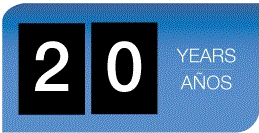Scientific Journals as Platforms to Publish Research of Excellence in Education - Strategies to Attract Researchers
DOI:
https://doi.org/10.7203/relieve.20.2.4274Keywords:
Education research journals, research, scientific publication, quality indicators, international visibility. Abstract
Abstract
This article helps to reflect on the most relevant characteristics of research journals of excellence, on those quality editorial management traits that facilitate the work of disseminating the findings of researchers in education so that they can contribute, along with all international researchers, to the central knowledge of science
 References
References
Aguaded, I. y Fonseca-Mora, M.C. (2013). Calidad del proceso editorial y visibilización internacional como proceso a la excelencia en la revista Comunicar/ Editorial process quality and international visibility as a process towards excellence in the Journal Comunicar. In FECYT (Ed.), Manual de Buenas Prácticas en la edición de revistas científicas. (pp. 11-19). Madrid: Fundación Española de Ciencia y Tecnología (FECYT)
Aliaga, F.M. (2014). Veinte años de publicación electrónica y de acceso abierto: la madurez de una pionera. RELIEVE, 20(1). DOI: 10.7203/relieve.20.1.3856
Bracho-López, R., Maz-Machado, A., Gutiérrez-Arenas, P., Torralbo-Rodríguez, M., Jiménez-Fanjul, N.N. & Adamuz-Povedano, N. (2012). La investigación en Educación Matemática a través de las publicaciones científicas españolas. Revista Española de Documentación Científica, 35(2), 262-280.
Cremades, R, Burbano, P., Valcárcel, M.A, Burillo, G., Fernández-Ríos, L. & Rodríguez-Díaz, J. (2014). The impact factor style of thinking: A new theoretical framework. International Journal of Clinical and Health Psychology 14, 154-160.
Delgado, E., Jiménez, E. & Ruiz, R. (2009). La ciencia española a través del Web of Science (1996-2007): las disciplinas. El Profesional de la Información, 18, 4, 437-443
Fonseca-Mora, M.C. (2012). Funciones de la figura de Scientific Journal Consultant en la visibilidad, difusión e indización de revistas. In V. Tur (Ed.), Bases de datos y citación. Reflexiones compartidas. I Encuentro de Revistas Científicas. Tenerife 2011. La Laguna (Tenerife): Sociedad Latina de Comunicación Social.
Giménez, E. & Jiménez, E. (2013). Los agujeros negros de la comunicación: Comunicación científica y metainvestigación. Comunicar, 41, 10-13. (DOI: 10.3916/C41-2013-a2).
Lee, I. (2014). Publish or perish: The myth and reality of academic publishing. Language Teaching, 47, 250-261. DOI: 10.1017/S0261444811000504
Li, E.Y., Liao, C.H. & Yen, H.R. (2013). Co-authorship networks and research impact: A social capital perspective. Research Policy, 42(9), 1515-1530.
Martín-Sánchez, F.J. & Miró, O. (2013). Impacto de la inclusión de artículos escritos en inglés en revistas biomédicas españolas de edición multilingüe. An. Sist. Sanit. Navar, 3 6(3), 467-470.
Milojević, A., Kleut, J. & Ninković, D. (2013). Propuesta metodológica para el estudio de la interactividad en revistas de comunicación. Comunicar, 41, 93-103. DOI: 10.3916/C41-2013-09
Moreno-Pulido, A., López-González, M.A., Rubio, F., Saúl, L.A. & Sánchez-Elvira-Paniagua, A. (2013). Evolución de las revistas españolas de Ciencias Sociales en el Journal Citation Reports (2006-10) y su valoración como indicio de calidad en la normativa evaluadora española. Revista Española de Documentación Científica, 36(3):e014. DOI: 10.3989/redc.2013.3.987 .
Ruiz-Pérez, R., Delgado, E. & Jiménez-Contreras, E. (2006). Criterios del Institute for Scientific Information para la selección de revistas científicas. Su aplicación a las revistas españolas: metodología e indicadores. International Journal of Clinical and Health Psychology, 6(2), 401-424.
Salager-Meyer, F. (2008). Scientific publishing in developing countries: Challenges for the future. Journal of English for Academic Purposes, 7(2), 121-132.
Torres, D., Cabezas, Á. & Jiménez, E. (2013). Altmetrics: New Indicators for Scientific Communication in Web 2.0. Comunicar, 41, 53-60. DOI: 10.3916/C41-2013-05
Tur-Viñes, V., Fonseca-Mora, M.C. & Gutiérrez-San-Miguel, B. (2012). Ética de la publicación científica: iniciativas y recomendaciones. El Profesional de la Información, 21(5), 491-497.
Downloads
Published
Issue
Section
License
The authors grant non-exclusive rights of exploitation of works published to RELIEVE and consent to be distributed under the Creative Commons Attribution-Noncommercial Use 4.0 International License (CC-BY-NC 4.0), which allows third parties to use the published material whenever the authorship of the work and the source of publication is mentioned, and it is used for non-commercial purposes.
The authors can reach other additional and independent contractual agreements, for the non-exclusive distribution of the version of the work published in this journal (for example, by including it in an institutional repository or publishing it in a book), as long as it is clearly stated that the Original source of publication is this magazine.
Authors are encouraged to disseminate their work after it has been published, through the internet (for example, in institutional archives online or on its website) which can generate interesting exchanges and increase work appointments.
The fact of sending your paper to RELIEVE implies that you accept these conditions.

